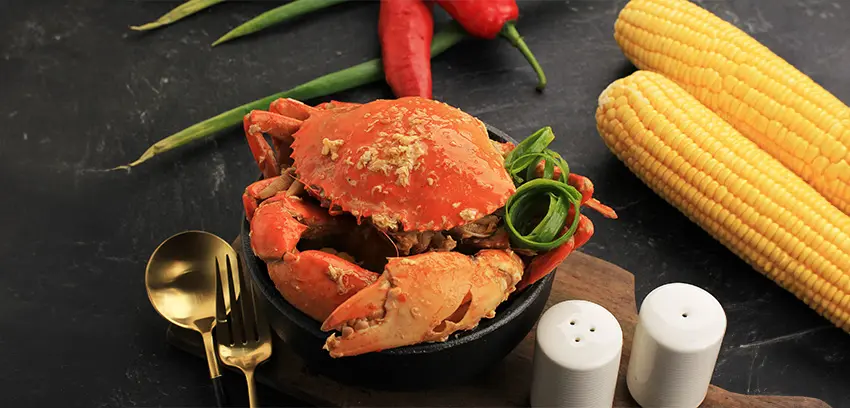The allure of the Maimi’s iconic Stone Crab is also in its fleeting availability. As the calendar pages turn to October 15th, Miami’s culinary scene marks the onset of the Stone Crab season. This six-month gastronomic celebration, stretching until May 1st, sees restaurants and seafood shacks bustling with patrons eager for their first taste of the season.
The Stone Crab’s limited availability adds to its charm, making each bite a treasured experience. As winter approaches and Miami’s beaches are painted with hues of orange and pink sunsets, the Stone Crab becomes more than just a dish; it’s a ritual. Locals and tourists alike mark their calendars, ensuring they indulge in this seasonal delight. Whether it’s a family gathering at a local eatery or a lavish feast at an upscale restaurant, the Stone Crab is the star, celebrated with fervor and joy.
Why Stone Crab is Iconic
The Stone Crab’s journey to the plates of Miamians is a tale steeped in tradition and resilience. Long before the glitzy skyscrapers and neon lights, the indigenous Tequesta tribe revered the Stone Crab, considering it a bountiful gift from the sea. As Miami evolved, so did its culinary landscape, with immigrants infusing their flavors and traditions. Amidst this melting pot, the Stone Crab stood out, not just for its taste but for its sustainable harvesting method. Unlike other seafood, the Stone Crab is returned to the ocean after declawing, ensuring its population thrives. Establishments like Joe’s played a major role in popularizing it, transforming this crustacean from a local delicacy to a symbol of Miami’s gastronomic heritage.
Where to Savor the Best Stone Crab Dishes in Miami
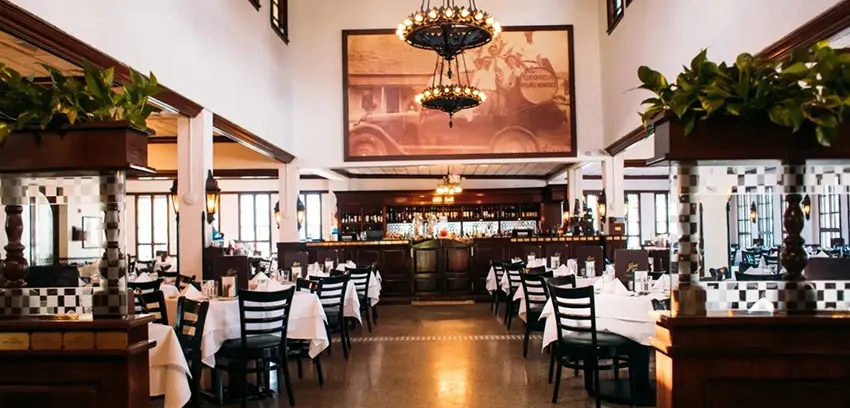
Image Courtesy: Joe’s Stone Crab
Joe’s Stone Crab
Located at 11 Washington Ave, Miami Beach, this iconic establishment has been serving Stone Crabs since 1913. A visit to Miami is incomplete without experiencing Joe’s. The ambiance, rich with history, complements the succulent crab dishes. A meal for two here, savoring their renowned Stone Crab dish, would cost approximately $150.

Image Courtesy: Casablanca on the Bay
Casablanca on the Bay
Located at 1717 N Bayshore Dr Miami, Casablanca Seafood Bar & Grill boasts over 30 years of experience in the seafood industry and is a prominent fish market and restaurant in South Florida. It is well-known for serving the freshest seafood, drawing attention from media, chefs, and tourists worldwide. Casablanca Seafood takes pride in serving the finest quality Stone Crab, making it a must-try for seafood enthusiasts. Casablanca Seafood Bar & Grill is a part of the Apogee Indigo network, accepting Apogee Indigo as a mode of payment.

Image Courtesy: Juniper on the Water
Juniper on the Water
Located at 1975 S Ocean Dr. in Hallandale Beach, Juniper On The Water is a light-filled, modern restaurant with deck seating overlooking the water. It features a Mediterranean-inspired seafood menu and is well-known for its delicious stone crab. It takes Apogee Indigo as a form of payment and is a part of the Apogee Indigo network.
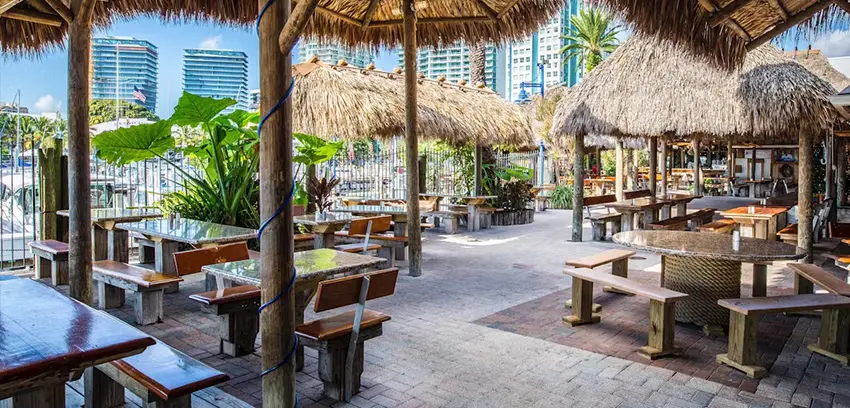
Image Courtesy: Monty’s Sunset – South Beach
Monty’s Sunset – South Beach
Nestled at 300 Alton Rd, Miami Beach, Monty’s offers a more laid-back setting. With live music and a view of the marina, it’s a favorite among locals. The Stone Crab claws here are a must-try, with a meal for two averaging around $90.
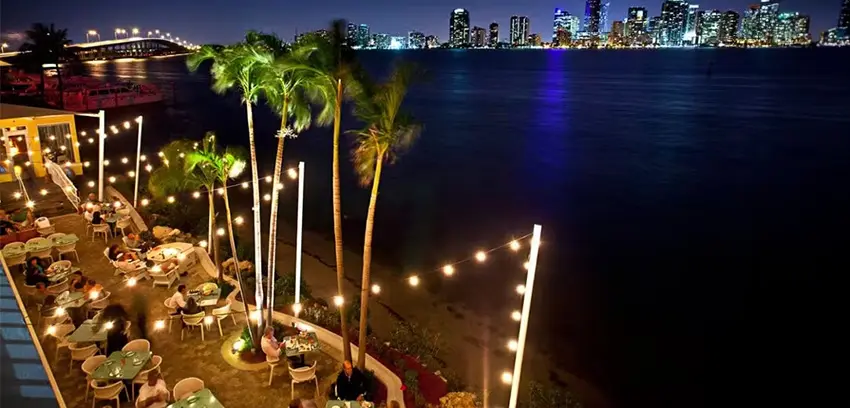
Image Courtesy: The Rusty Pelican
The Rusty Pelican
Situated at 3201 Rickenbacker Causeway, Key Biscayne, this place offers a panoramic view of the Miami skyline. While known for its seafood platters, their Stone Crab dish stands out. A delightful meal for two here would be in the ballpark of $120.
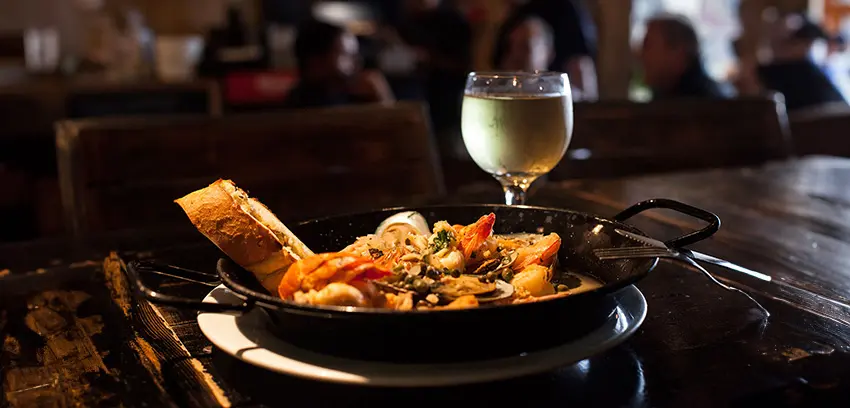
Image Courtesy: Garcia’s Seafood Grille & Fish Market
Garcia’s Seafood Grille & Fish Market
Located at 398 NW North River Dr, Miami, Garcia’s is a gem for those who love fresh seafood. Overlooking the Miami River, it offers a serene dining experience. Their Stone Crab claws are a delicacy, with a meal for two costing around $100.

Image Courtesy: Freepik
The Sensory Delight of Stone Crabs
That’s the sensation when you savor a Stone Crab claw. The meat is incredibly tender, almost buttery in texture, and carries with it a subtle sweetness. Each bite is a burst of flavor, a symphony of taste notes that dance on the palate.
The first bite is an invitation, a gentle tease of what’s to come. As you delve deeper, the flavors become more pronounced, echoing the depths of the ocean from which it hails. There’s also a brininess, reminiscent of the vast expanse of the Atlantic.
Imagine the experience: The ritual of cracking the hard shell to reveal the succulent meat inside, the anticipation as you dip it into the tangy mustard sauce, and the satisfaction as the flavors meld perfectly in your mouth. It’s a culinary journey, one that tells you about Miami’s love affair with the ocean and its treasures.
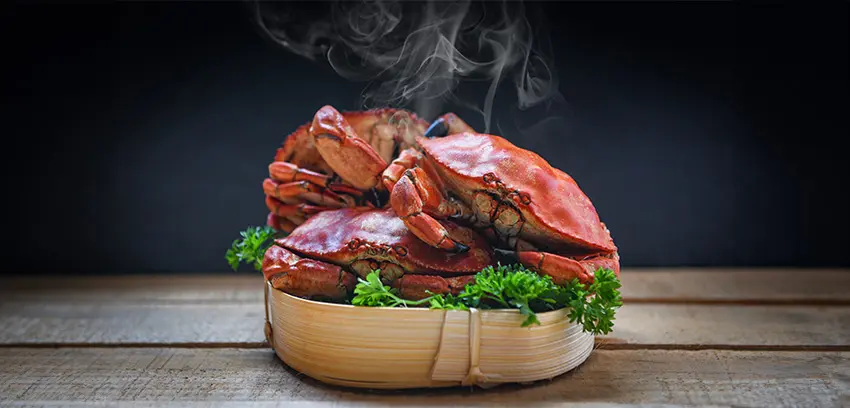
Image Courtesy: Freepik
Harvesting of Stone Crabs
Unlike other seafood, Stone Crabs are caught for their claws alone. Once a crab is caught, fishermen expertly remove one or both claws, ensuring that they are of legal size, and then release the crab back into the ocean. This practice allows the crab to regenerate its claws, a remarkable adaptation that ensures the sustainability of the species.
Local fishermen, with their deep-rooted knowledge of the waters and the crab’s habits, play a pivotal role in this process. They are often from families that have been in the trade for generations, and work closely with restaurants such as Joe’s Stone Crab and others, ensuring a steady supply of fresh claws throughout the season.
Recognizing the importance of preserving the Stone Crab population for future generations, the Florida Fish and Wildlife Conservation Commission (FWC) has introduced new regulations for the 2023-24 harvesting season.
One of the most significant changes pertains to the design of the traps used for harvesting Stone Crabs. All traps, irrespective of whether they are made of plastic or wood, must now be equipped with an unobstructed escape ring. This escape ring is crucial for conservation efforts as it allows smaller crabs to escape from the traps, ensuring they can grow to maturity and contribute to the crab population.
The new regulation aims to promote a sustainable harvest, ensuring that there are always mature crabs available in subsequent seasons.
Whether you’re a local relishing a family recipe or a tourist savoring your first bite at a renowned eatery, the Stone Crab offers a taste of Miami’s soul. So, the next time you find yourself in Miami, remember to indulge in this seasonal delight and let the flavors transport you through the annals of Miami’s rich culinary history.
